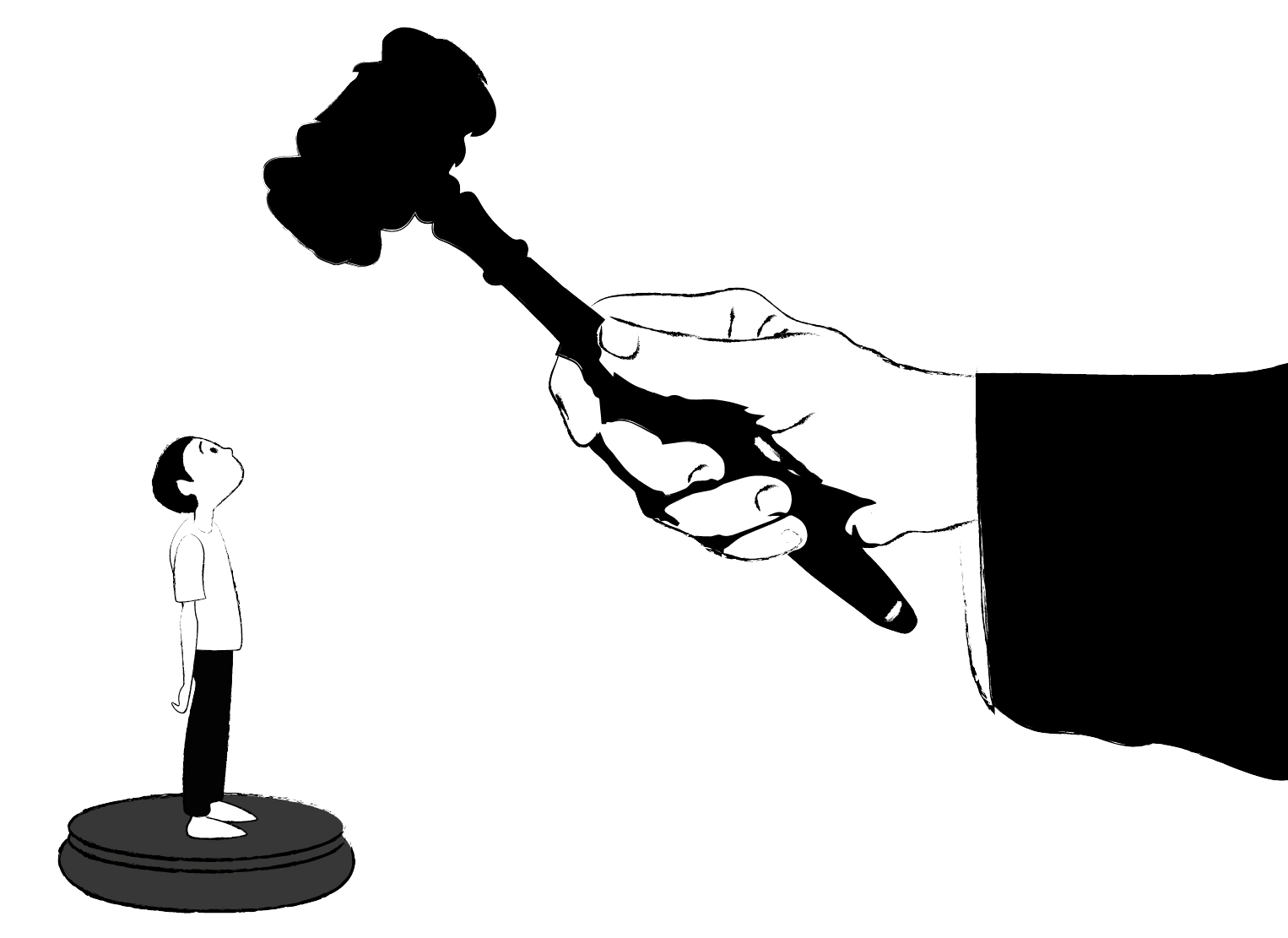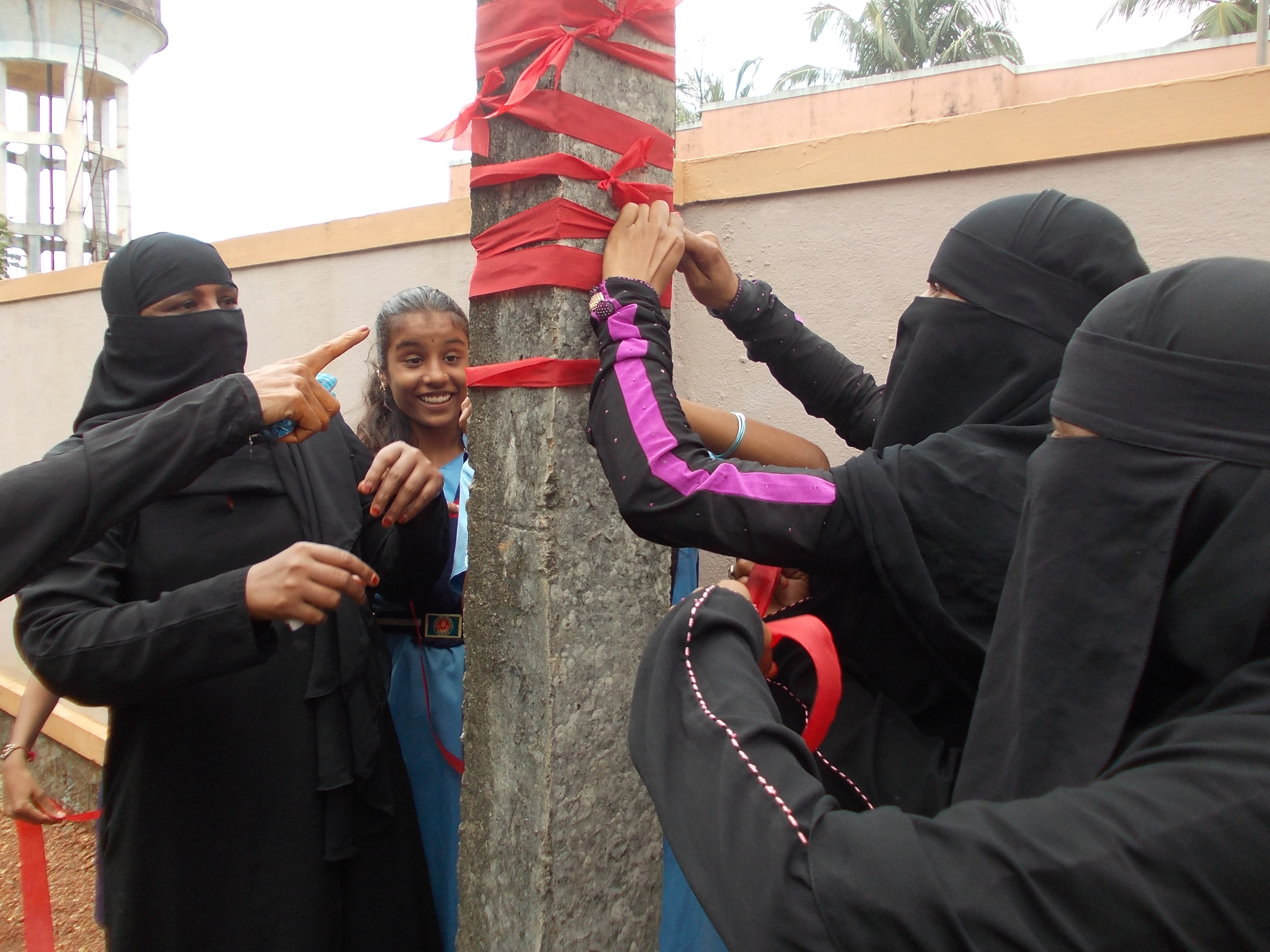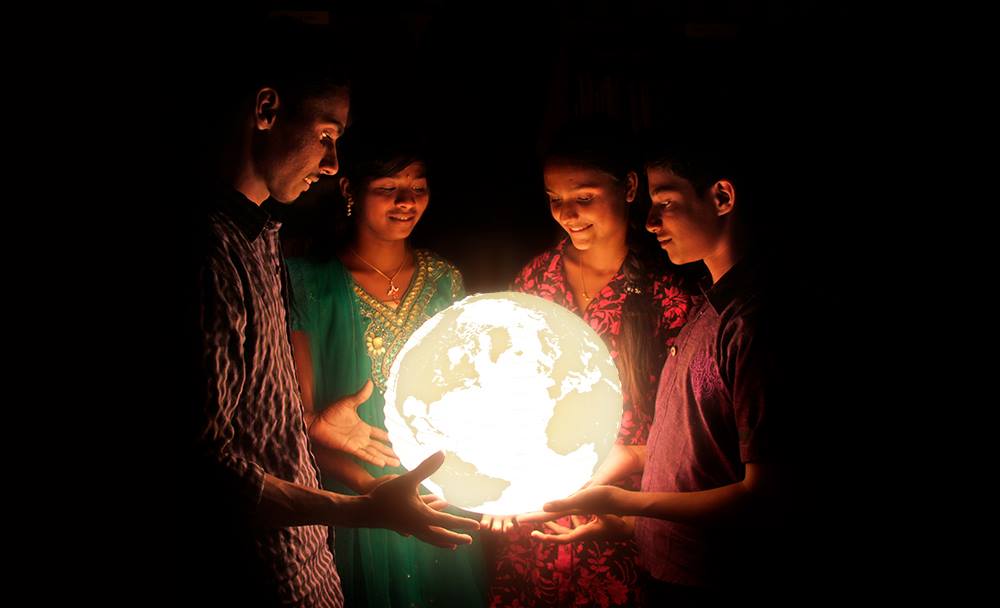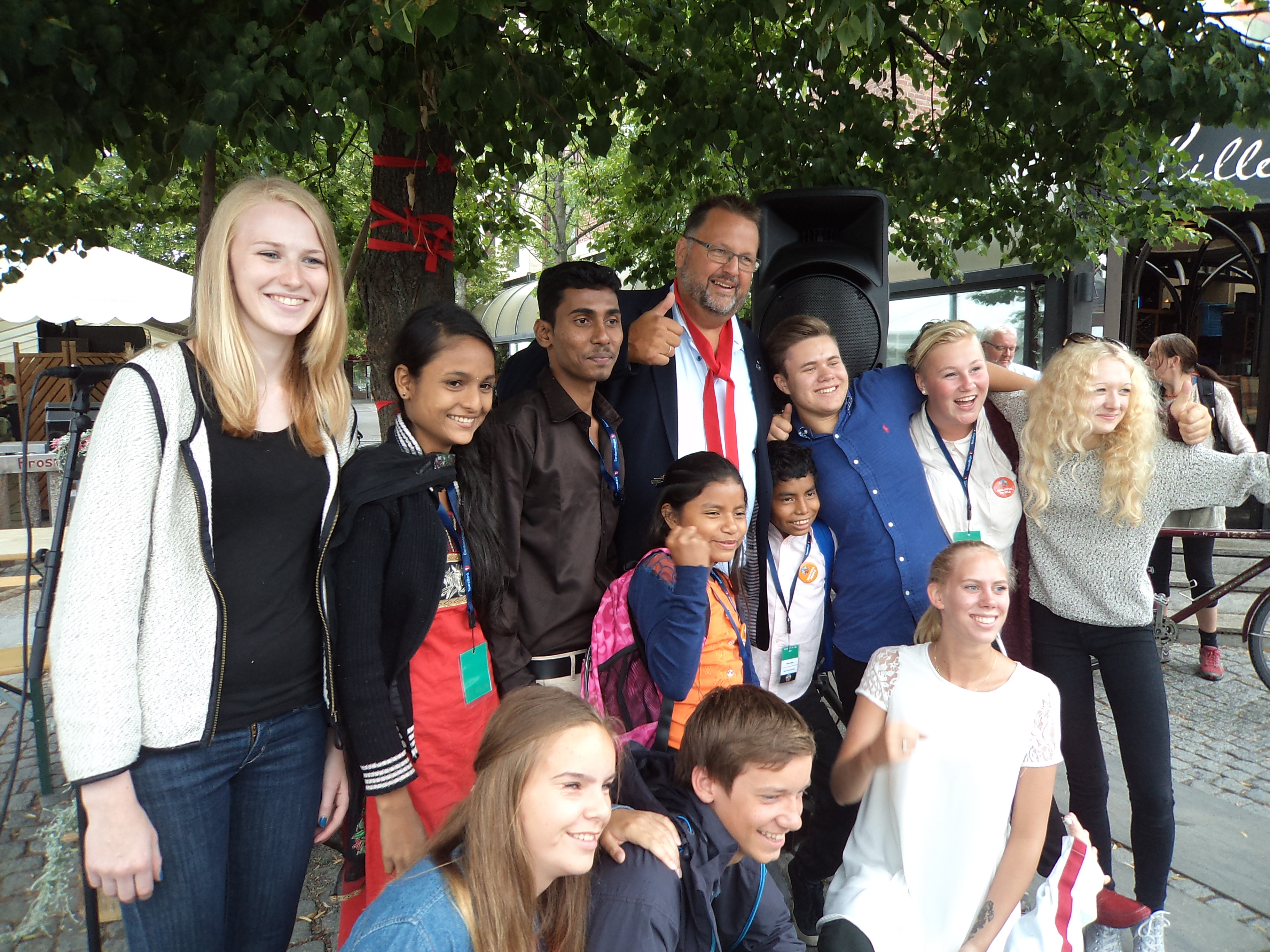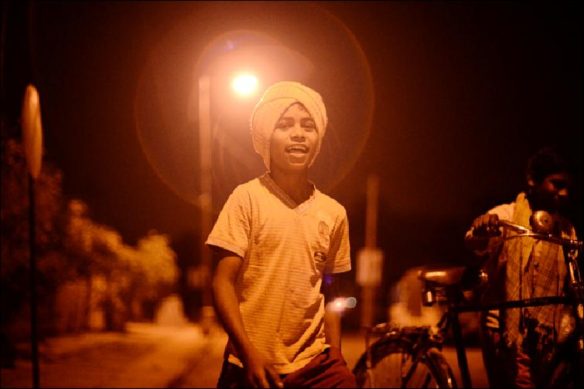CWC Newsletter – Issue 02 September 2014
The new Juvenile Justice Bill: In whose best interests?
Principle of best interest: All decisions regarding children should be based on the primary consideration that they are in the best interest of the child and shall help the child thereby to develop to his or her full potential. ~ The Juvenile Justice (Care And Protection Of Children) Bill, 2014
In the year 2000, the Ministry for Social Justice and Empowerment, under Maneka Gandhi, took the prerogative of ensuring that India made its commitments to the UN Convention on the Rights of the Child deeper, by drafting the progressive Juvenile Justice (Care And Protection Of Children) Law. The Statement for Objects and Reasons of which prescribed “(…) a uniform age of 18 years for both boys and girls” and stated its intention “to make the juvenile system meant for the juvenile or the child more appreciative of the developmental needs in comparison to the criminal justice system as applicable to adults”. It also showcased its commitment to progressive international instruments such as the Standard Minimum Rules for the Administration of Juvenile Justice, 1985 (the Beijing rules) and the United Nations Rules for the Protection of Juveniles Deprived of their Liberty (1990). All of these recognise juveniles as being under the age of 18 and consider, “Deprivation of the liberty of a juvenile should be a disposition of last resort and for the minimum necessary period and should be limited to exceptional cases”, making the case for reformatory versus retributive justice for children.
It is then profoundly paradoxical that many years down the line, it is on these grounds that the child rights community finds itself pitted against the government regarding the Juvenile Justice (Care And Protection Of Children) Bill, 2014. The issue at hand is the sudden unexplained shift in the trial of the 16-18 age group of children who have committed heinous crimes, to the purview of adult courts. Ironically, it is again Maneka Gandhi, now the Union Minister of Women and Child Development, under whom this move has taken place. The only possible pre-cursor to this move was the public anger against the juvenile who was involved in the Delhi 2012 rape. Amidst the clamor for action then, Justice J.S. Verma, former Chief Justice of India, headed a committee to look into laws relating to sex offences. In an interview, he clearly stated: “We did consider, however, a general lowering of the juvenile age. The research and the statistics in this area, as well as our own experience shows that it was not viable. Even the women’s organisations, most of them were of the view that it was not desirable.”(1) Following this, in the 2013 case of Dr Subramanian Swamy & Ors v. Raju Thr. Member Juvenile Justice Board & Anr in the Supreme Court of India, where the matter of maximum age at which a child can be tried as a juvenile rather than as an adult was discussed in the Supreme Court, the courts dismissed the challenges to the Juvenile Justice Act and upheld the requirement under the Act that all persons under 18 years of age are to be treated as juveniles subject to the Act.(2)
Yet, in 2014, the clause found its way into the Bill supported by no research or numbers that justify it; and no qualitative consultations (apart from a 15 day tokenistic online comments period) with people/groups who could inform the debate such as child rights community, psychologists, members of the JJ system, the National Commission for Protection of Child Rights (NCPCR)(3) and most importantly, the children themselves. This lead to a barrage of arguments from the denied communities which highlighted clearly:
- How data disaggregation showed that the already small and unchanging percentage of sexual offenses by juveniles was actually constituted of a large number of cases where young love was involved.(4)
- Research from various country contexts which showed that trial in adult systems does not reduce juvenile recidivism.(5) and (6)
The important question considering the above and the several principles from international child right’s instruments enshrined in the old act and the new bill, is then: who is the Juvenile Justice law meant to serve and what approach should define any changes in it?
The Juvenile Justice system, in its current form has been envisaged as a system which is to respond to children in need of care and protection along with children in conflict with law and is meant to cater to the youngest and most marginalised within the country. It is a system that is to provision support to those who have no other support systems and need the State’s helping hand through their formative years. Unfortunately, these past years we are increasingly hearing of how it is with great cruelty, violating children more than protecting them.(7) In The Concerned for Working Children’s critique of the Bill,(8) we highlight several of the larger concerns with it which have unfortunately been side tracked in the current media conversation. These are regarding the governance structures, methods of data and research management, availability of complaints mechanisms for children, unclear jurisdiction of the bill, capacity building of staff on child rights, the methods to ensure that institutionalisation is the last resort, how the right to participation and representation are to be integrated into the system etc.
The need of the hour is certainly to re-visit and study the failings of the system. Yet considering the fragile lives at stake, the approach must be scientifically and democratically tempered, keeping the best interests and voices of the children at heart.
- http://www.dailymail.co.uk/indiahome/indianews/article-2270861/Justice-J-S-Verma-Lowering-juvenile-age-option-Head-panel-considering-rape-law-rejects-calls-prosecute-18s-adults.html
- CRIN Legal Database
- http://www.thehindu.com/news/national/panel-against-change-in-juvenile-justice-act/article6301702.ece
- http://www.thehindu.com/news/national/stories-behind-sexual-assault-rulings-shine-light-on-reality-of-rape/article6265285.ece” http://www.thehindu.com/news/national/stories-behind-sexual-assault-rulings-shine-light-on-reality-of-rape/article6265285.ece
- http://www.hindustantimes.com/comment/analysis/the-juvenile-justice-act-can-heal-broken-spirits/article1-1243059.aspx” http://www.hindustantimes.com/comment/analysis/the-juvenile-justice-act-can-heal-broken-spirits/article1-1243059.aspx
- http://www.deccanherald.com/content/423287/remedy-worse-malady.html” \n _blankhttp://www.deccanherald.com/content/423287/remedy-worse-malady.html
- A report published by Asian Centre for Human Rights in 2013, titled ‘India’s Hell Holes: Child Sexual Assault in Juvenile Justice Homes’, states: “It will not be an understatement to state that juvenile justice homes, established to provide care and protection as well as re-integration, rehabilitation and restoration of the juveniles in conflict with law and children in need of care and protection, have become India’s hell holes where inmates are subjected to sexual assault and exploitation, torture and ill treatment apart from being forced to live in inhuman conditions. The girls remain the most vulnerable.” It highlights as gory samples, 39 such “emblematic cases of systematic and often repeated sexual assault on children in juvenile justice homes”.
- http://www.concernedforworkingchildren.org/news/2014/07/preliminary-comments-on-the-juvenile-justice-bill/
Creating governance spaces for marginalised voices: Piloting the Special Women’s Gram Sabhas in Udupi .
The Concerned for Working Children (CWC), has been steadily working towards creating and supporting governance mechanisms which bring the voices of the marginalised within the system.
The gram sabha, is unique in being the one space where direct democracy is practiced i.e. citizens can interact with and question their elected representatives directly. Yet any such space is defined by the social norms and practices of that region leading to imbalances in participation from different sets of people. Hence, special considerations need to be made to ensure that marginalised voices are also heard. CWC began by advocating for Makkala Gram Sabhas (Children’s Village Meet) within the Panchayati Raj system, which were special sabhas just for children as the unique issues and experiences of children did not find mention in the discussions and debates held within the adult gram sabha.
We steadily established the concept of a Makkala Gram Sabha through our field work in rural Udupi and succeeded in converting it into a Circular for the state of Karnataka annually. As we did this, it became evident that women too faced similar marginalisation within the larger gram sabhas. When the Government Circular for Special Women’s Gram Sabhas was released in June 2014, CWC decided to support a pilot of the process. The idea behind undertaking the pilot was that it would showcase the process involved in ensuring that sabhas become an important and powerful space for women to voice and resolve their concerns.
These Women’s Gram Sabhas were held across 56 Panchayats in Kundapur taluk starting from 18 August, 2014. Children also participated enthusiastically in the gram sabhas. In light of the recent sexual assaults on women and children, the collective need felt – by the Gram Panchayats, Taluk Panchayats, Police Departments and the women and children – was to have this pilot process focus on the need to create systems that ensure safety and protection of women. By our last tabulation, a total of 14,224 women and 5,692 children had participated in 50 gram sabhas. They have collectively raised and begun to resolve 996 issues (women: 615; children: 381).
The women had attended preparatory workshops with CWC in order to participate effectively in these Special Gram Sabhas. They prepared a list of their problems alongside the departments responsible for the implementation of the solutions to each of these problems. The women carried out processions calling out slogans to create awareness in the community regarding the safety and protection of women. At the end of the procession, they reach the Gram Sabhas and tie a number of ribbons to a tree in front of the Panchayat, symbolising the number of issues raised by the women. These will be replaced with white ribbons as the issues are resolved.
The women have largely raised demands for a separate women’s helpline (which will be the responsibility of the police department) and a suggestion box (which will be the responsibility of the Panchayat to manage) for the women to share the complaints and concerns regarding safety and protection issues in their villages. They have also demanded the selection of a Mahila Mitra (Woman’s Friend) who will support women through various ways such as provisioning information, linking them to people/institutions as required etc. Each of these Gram Sabhas have been concluded with the constitution of an Implementation Committee (which has members from the Village and Taluk Panchayat, Anganwadi, ASHA workers, women from SHG groups and representatives of women and children) which will oversee the implementation of the decisions taken at the Gram sabha and a Watchdog Committee to keep a check on the safety and protection aspects in the village (which will have representatives from the police department and representatives from women and children from each of the villages).
This is the first time such a large scale pilot of Women’s Gram Sabha has taken place in the state of Karnataka. CWC hopes that this will invigorate other taluks to undertake similar processes at the earliest and support the qualitative mainstreaming of women’s voices in the governance arena.
4 children. 2 International events. 1 message – Children are citizens today.
Four children, Puneeth (14) and Vidya (15), Venkatesh (18) and Annapurna (16), democratically elected from their children’s groups, representing 190 school children’s unions/organizations and 56 children’s panchayats (Children’s Local Government) from Udupi, Karnataka represented India at two international events last month. They were accompanied by adults from The Concerned for Working Children (CWC). They came back with great learnings, insights and most importantly – a higher level of confidence. They speak of their journeys and their enriching experiences here.
Puneet and Vidya at the Children as Actors for Transforming Society (CATS) held in Caux, Switzerland
CATS is a weeklong conference set in the beautiful mountains of Caux, Switzerland. It aims to enable children, young people and adults who are advocates for the rights and well-being of children to work together as agents of change and co-creators of a more just, sustainable, inclusive and equitable society. The event had 450 participants, including children and adults, from 41 countries from around the world. The children along with members of CWC also facilitated comprehensive workshops on ‘Children & Research’ and ‘Monitoring & Evaluation’ for the other participants. They spoke from their experience of supporting and participating in the Monitoring and Evaluation of Children’s Participation Toolkit process.* The creation of this Toolkit involved ten projects across nine countries in different regions of the world, in partnership with Save the Children, UNICEF, Plan, World Vision and The Concerned for Working Children. They also shared the methods utilized by them for resolving children’s issues in their village through the collectives’ efforts of information management.
Vidya: Children from 56 panchayats had chosen 60 children amongst us to attend various forums as the children’s representatives. From this group of 60, we children had further shortlisted 10 children to attend the international conferences in August. I was among the 10. Then one Sunday, when I was told that I was chosen by the children to attend a conference in Switzerland, I was thrilled! My friends in my group ran to nearby shops, bought sweets and shared it, expressing their joy at my selection!
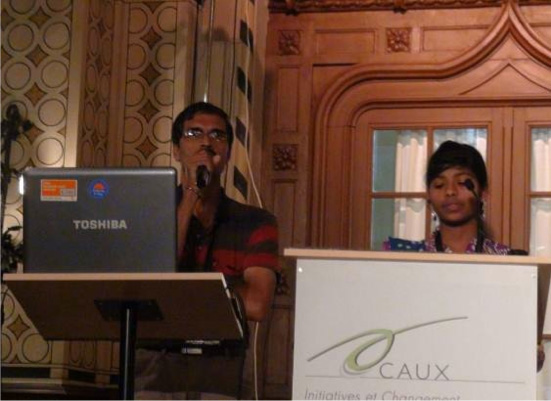
Puneeth: I was earlier selected by my group to attend a workshop in Ghana last year. But could not go for it due to unavailability of Yellow Fever vaccine. Then one day, Vanajakka from CWC came by and told me that I was soon to go to Switzerland to participate in a conference there! I was really surprised and happy. Also a little worried as this was the first time I was going abroad.
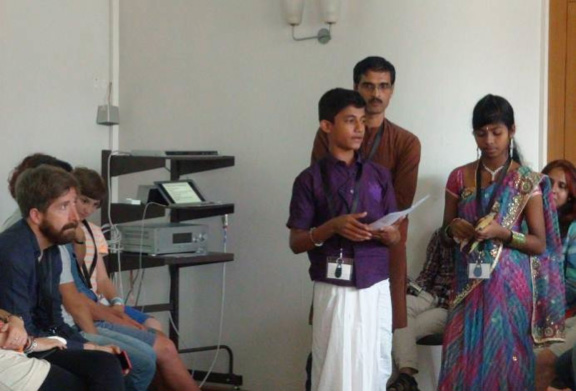 Vidya and Puneeth: Over the next few weeks, we had extensive preparatory sessions lined up for us. Children in our groups helped us identify and finalize the issues which we would be speaking about at the conference. We had several rehearsals to perfect the ‘Hejje’ (Footprints) and Body Mapping tools which we use to identify and resolve issues within our communities. We recalled all the incidents, challenges and our experiences while using these tools to solve a problem in our village.
Vidya and Puneeth: Over the next few weeks, we had extensive preparatory sessions lined up for us. Children in our groups helped us identify and finalize the issues which we would be speaking about at the conference. We had several rehearsals to perfect the ‘Hejje’ (Footprints) and Body Mapping tools which we use to identify and resolve issues within our communities. We recalled all the incidents, challenges and our experiences while using these tools to solve a problem in our village.
We finally boarded our flight to Switzerland on 27th July 4.45am. It was a great feeling for both of us because this is the first time we were flying in an aircraft! It was very cool inside and there was a TV behind each seat. Though we were tired and sleepy, we played games and watched animated films on the small TV. We reached Geneva at noon around 2.30pm on 27th, but discovered that all our check in baggage was missing! Anyways, we decided to proceed as we had a lot to achieve and had no hours to spare.
Vidya: I was very scared and nervous, when they announced that I was going to speak of our group’s achievements in the Main Hall. Actually, I had prepared for a 20 minute presentation, but was informed in the last minute that the duration was reduced to 10 minutes. I was really confused about how I could condense all that I had to say in 10 minutes. I started my speech by narrating how children in my village collectively tackled the problem of alcoholism. I encouraged children present in the auditorium to engage on issues of governance and recognize that they are citizens today. I even asked everybody to shout out the slogan ‘Children are citizens today’! There was a great round of applause from the audience. I think there were around 300 to 350 people including children. I was very happy and was proud of myself because I had done my life’s first presentation on a foreign soil with such a great support! I was hugged and congratulated over and over again.
Monitoring and Evaluation Session
Puneeth: I was very scared and anxious about delivering a speech in a foreign land. I was confident presenting in front of my people and my group members but this was totally a new experience of speaking in front of people from different countries. I started rehearsing with Vidya’s help.
Ramesh and Biplaw (CWC facilitators who accompanied us) encouraged me to speak confidently without worrying who is in the audience. I was also aware that the session was being recorded and I had to do my best. Finally, I started my speech by narrating one of our success stories of getting a bridge built across the stream in my village. I showed the paper cutting of the news and the photo of the newly built bridge. People were very interested. Everyone in the small hall applauded and appreciated our work. I was very happy!
Introducing Body Mapping Tool
Vidya: I was a little tensed when I started the session. I had prepared for a systematic step-by-step introduction but due to nervousness, muddled it up in some places. I said that I was just going to school, home, to my relatives’ places but after becoming a member of my group I was able to travel to different places in and around my village, as part of the survey team where we conducted a survey throughout our village to identify problems and issues faced by the children in the village where we could identify 47 such problems and have been able to get 17 of them solved. I am here because of those achievements of my group. I have been able to travel to a place like Switzerland which is nearly 7000 kilometers away from my country and that’s a proof of my participation.
Vidya and Puneeth: The most important thing we realized, is that the conference widened our vision and our thoughts. All the while, we assumed that we were the only children, or our village or country that had problems, but after meeting with several organizations and learning the situation of the children in their respective countries, we felt that our problems are not that serious comparing to them.
Venkatesh and Annapurna at the St. Olav’s Festival held in Trondheim, Norway
It is one of the largest cultural festivals in Norway with almost 300 events organized within it. The delegation from India was there to participate in a series of sessions on ‘Children’s Right to be Heard’ that were organized by the Trondheim City Council for the Trondheim Youth Council and the marginalized children of the region. CWC has been working with the city council of Trondheim since last year to shape these sessions on ‘Children’s right to be heard’. Venkatesh, Annapurna and CWC members were there as a group to facilitate, participate and engage with the local Youth Councils and marginalized children. Two workshops on Children and Governance and Information Management for problem intervention were undertaken by the Indian group. These workshops looked at understanding more deeply the nature of participation in governance by children. The children from India presented their experiences of resolving issues within their panchayats through their collectives and shared the methodology used by them. These sessions were also utilized to create tools which would be used to present Norway’s Youth Council’s own issues and vision.
Venkatesh: When I was 12 years old, I had represented India at a child rights conference held in Luxemburg. That was a very empowering and fruitful experience. Then when I was told that I was going to attend the St. Olav’s Festival in Norway in August 2014, I was really excited. I knew that this event would further develop my skills and also help me enable my friends back home more effectively, just like the Luxemburg event did.
Annapurna: The people in my village did not react too well when they realized that I am selected to go for this conference. They were apprehensive about me missing school and tried persuading my parents against sending me. But luckily, my parents had earlier seen how the Bhima Sangha (children’s unioun) and its activities have created positive changes in my older sister who was an active member of the sangha. They allowed me to go for the conference. Thank God, they did!
Venkatesh and Annapurna: Our journey was not confirmed until the last moment because we had trouble getting our visas. However, we continued with our extensive preparation for the conference. We knew that we are representing our children’s groups, our state and our country. It is our voices that have to convey the issues and concerns that our friends are facing. We discussed at length with our sanghas and rehearsed the tools that we were going to introduce at the conference.
We finally got our visas on the day we were to travel. The journey was pleasant except that we realized in Oslo that our check in baggage was missing. Not only our clothes, but also all the material that we needed for the conference were in those bags. We were very worried that we may not be able to present effectively because our session was scheduled for the very next day! Anyways, we managed to recreate all the material on the day we landed and made a remarkable presentation after all! We were proud of ourselves for achieving this.
Annapurna: What we really wanted to convey to other children from across the world is that they can make a difference in their lives and the society they live in by exercising child rights. We shared our experience of getting a dangerous stone quarry in Aloor filled and made safe. The other participants at the conference were amazed at how we children identified and resolved such issues by bringing it up in the local government meetings.
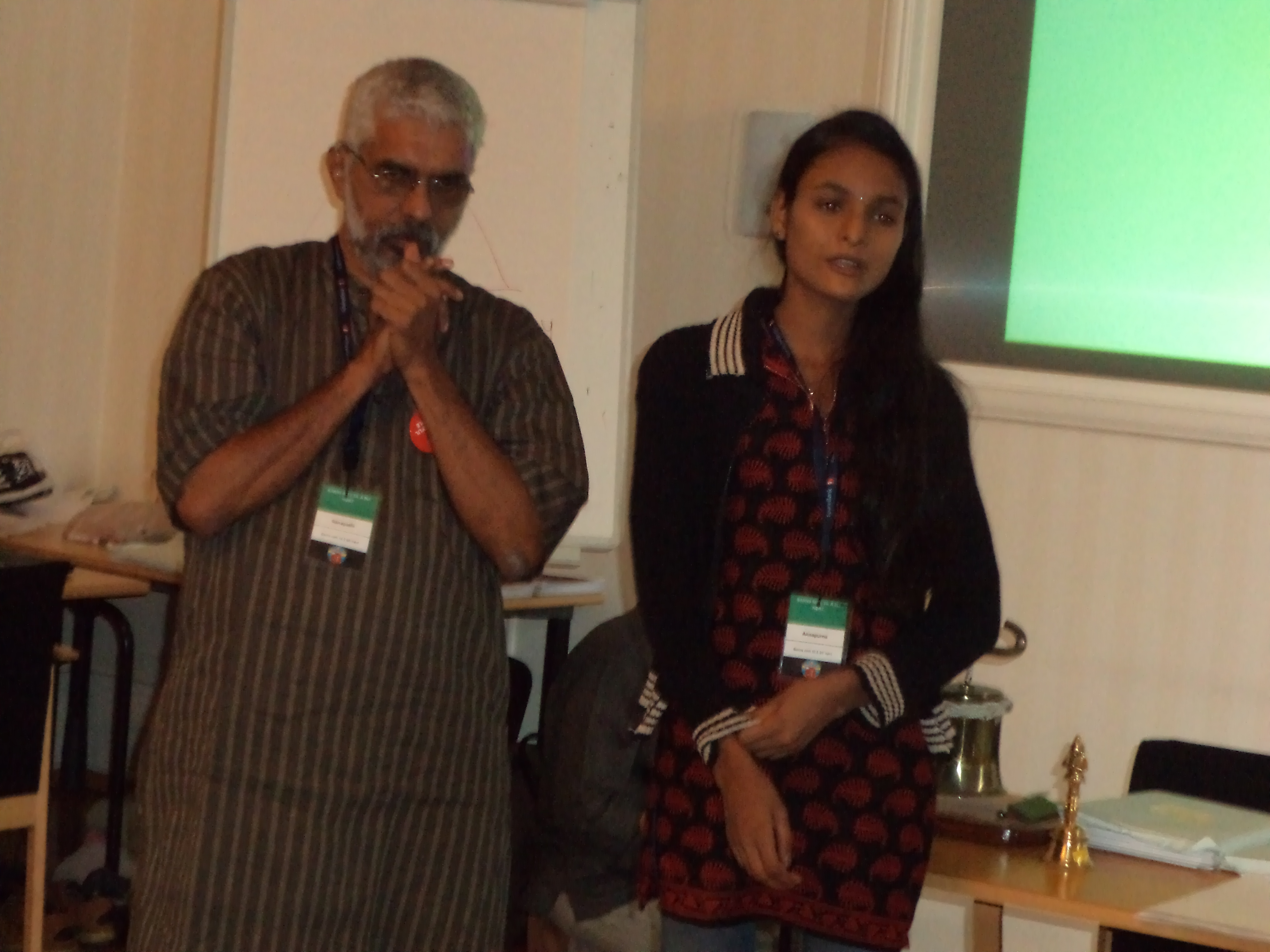
Venkatesh: We had extensive conversations regarding marginalized and homeless children in Norway. They were struggling for their rights and we children from across the globe tried using our experiences back home to see how they can be used to alleviate the lives of these children. We composed a song as well, speaking of child rights and this experience taught me that songs and music are also powerful mediums of communication we children can use.
Venkatesh and Annapurna: Back in our village, we children had devised a method of communicating to and holding the local government responsible for problems we children were facing. We tie red ribbons signifying our demands on a pole or a tree set in a prominent location in the village. When a demand was met or resolved, we changed the red ribbon to a white ribbon. Inspired by our process, the Trondheim Youth Council also decided to adopt this method to put forth demands to the State Council. So, in the presence of Svein Harberg, Leader of the Parliament Committee on Families, Children and Culture and Laila Bokhari, State Secretary for the Prime Minister of Norway we tied red ribbons around a tree in front of the Nidaros Cathedral which is one of the most significant cultural and historical spots in the country. We tied a ribbon on behalf of the international community of children demanding that children’s right to be heard be added to the Constitutions of all countries and participation of the most marginalized especially be guaranteed.
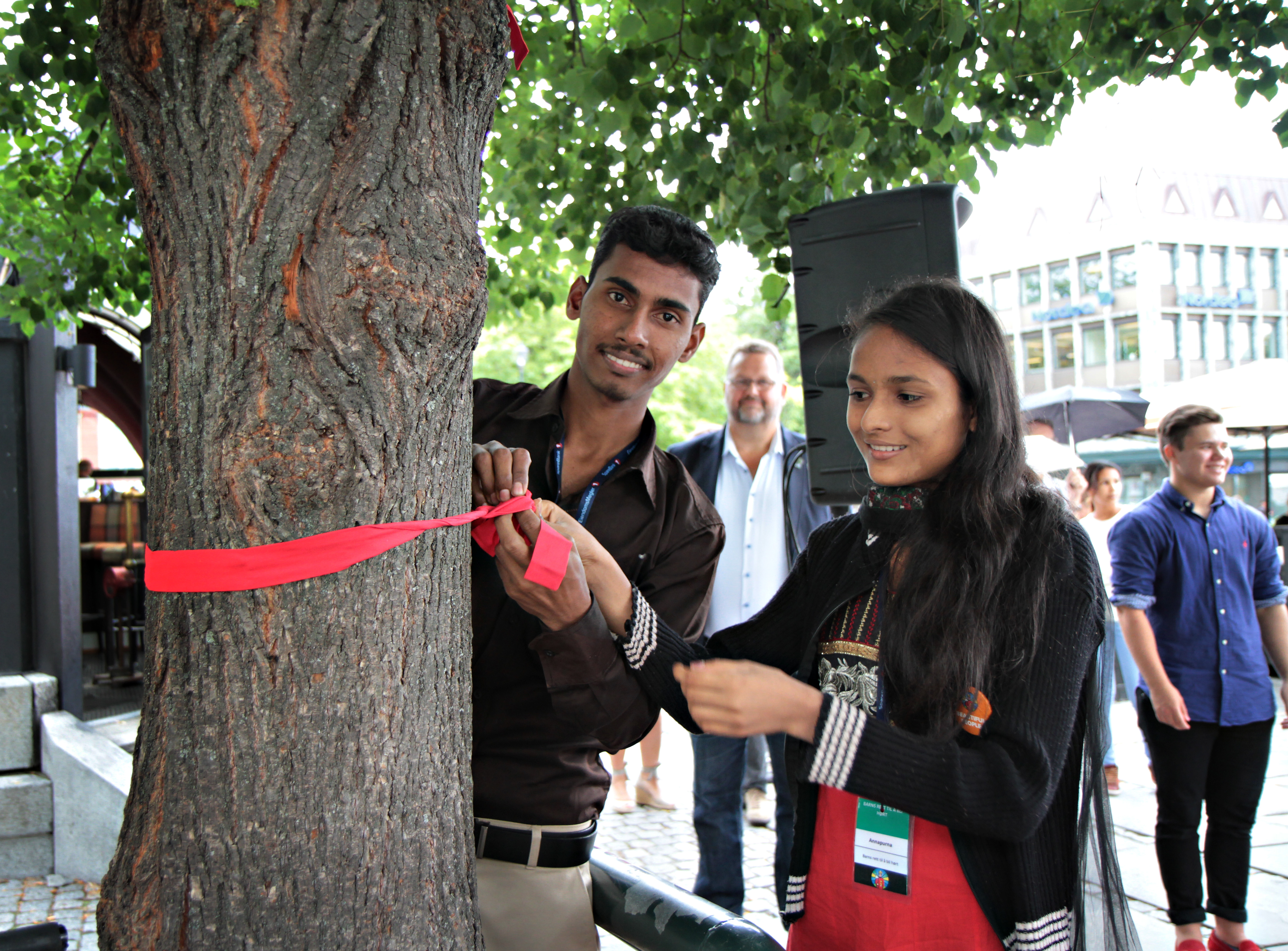
We are back from Norway with a lot of learning and insights. We are proud of our achievements in Norway, but also aware that we have a great responsibility of sharing our experiences and learnings with our friends who chose us to represent them at Norway.
*If you are keen on understanding and learning about our Research Facilitation Tools, do write to us at arpita.cwc@gmail.com with a statement of purpose and we will surely get back to you.
You can know more about CWC’s involvement, facilitation and participation in these events by reading the Press Releases here.
Vidya, Puneeth, Venkatesh and Annapurna’s recount of their journeys were transcribed and translated to English from conversations we had with them post their trips.

